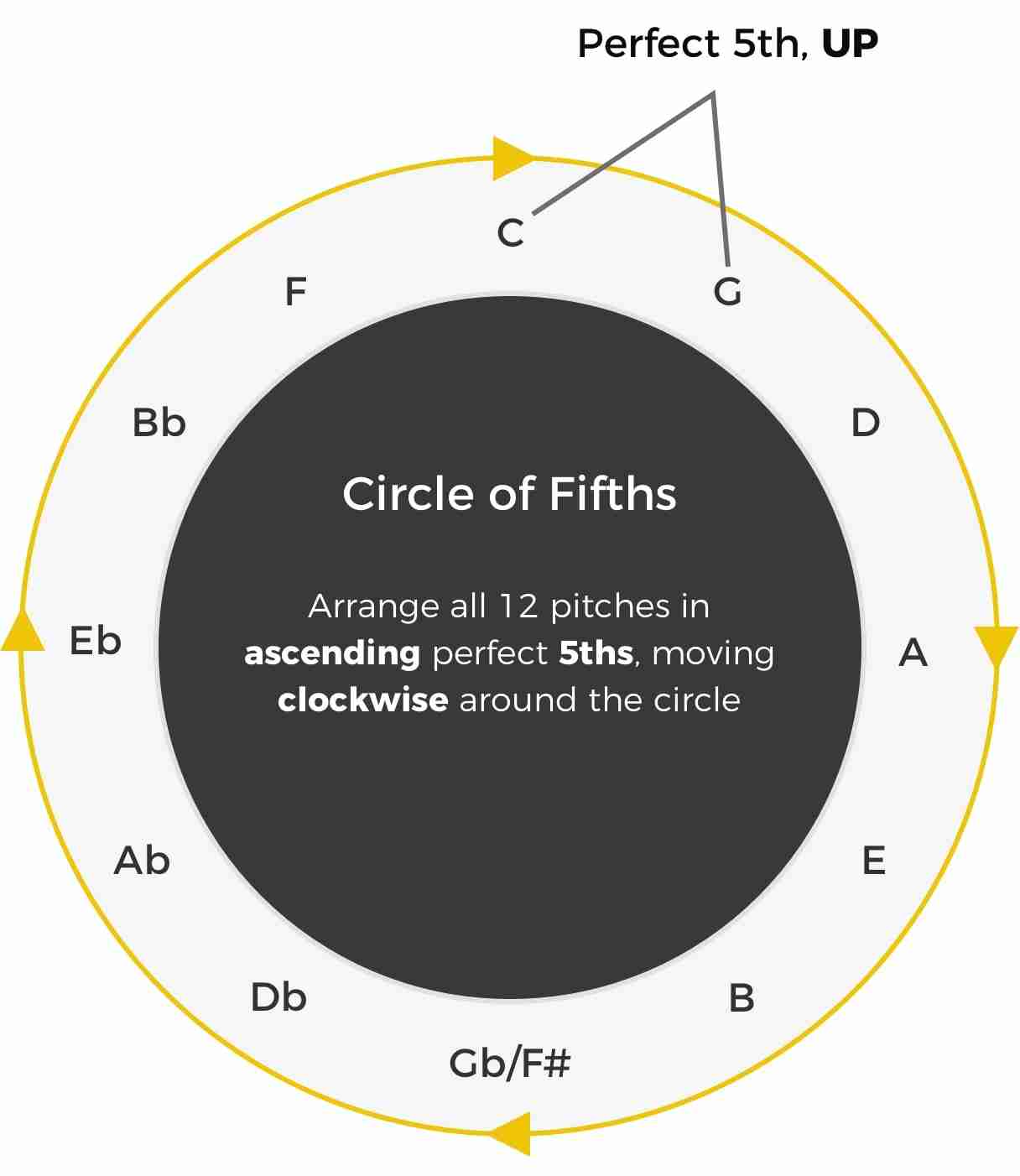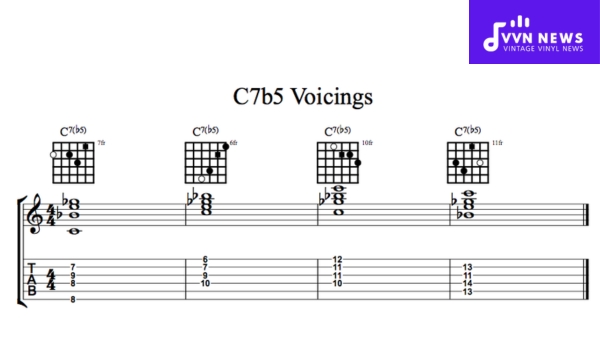Attention all aspiring rock stars and bedroom guitar heroes! Are you tired of strumming the same old boring chords and wondering why your songs aren’t making heads turn like a bad ’80s mullet? Well, fear not, because we’re here to unlock the secret to crafting catchy tunes that will have people tapping their feet and begging for an encore. Get ready to master guitar chord progressions and take your music from mild to wild in no time!
Contents
- 1 Understanding the Fundamentals of Guitar Chord Progressions
- 2 Exploring the Major and Minor Chord Sequences
- 3 The Role of Circle of Fifths in Songwriting
- 4 Innovating Beyond Common Progressions for Unique Sound
- 5 Incorporating Secondary Dominants for Tension and Resolution
- 6 Leveraging Modal Mixture for Emotional Depth and Contrast
- 7 Tips and Techniques for Smooth Chord Transition Mastery
- 8 FAQs
- 9 Rock On!
Understanding the Fundamentals of Guitar Chord Progressions
So you’ve picked up a guitar and want to impress your friends with your amazing chord progressions, huh? Well, first things first, you’ve gotta understand the basics. And lucky for you, I’m here to break it down in a way that even your grandma could understand.
First off, let’s talk about chords. Chords are like the building blocks of music. They’re a group of notes played together to create a harmonious sound. Think of them as the ingredients in a recipe – you need the right combination to make something delicious. Without chords, music would just be a bunch of random noise… kind of like that one time your uncle tried playing the accordion at Thanksgiving.
Next up, we’ve got progressions. This is just a fancy term for the order in which you play your chords. It’s like following a map to get from Point A to Point B, except instead of landmarks, you’ve got chord changes. If you want to keep your audience engaged, you’ve gotta have a killer progression that keeps them on their toes. Nobody wants to listen to the same three chords on repeat for five minutes straight… well, unless you’re playing “Wonderwall” at a college party.
Now, when it comes to building your own chord progressions, the sky’s the limit. Mix and match different chords, experiment with different rhythms, and don’t be afraid to get a little weird – after all, that’s how some of the best music is made. So grab your guitar, get your fingers ready, and let’s dive into the wonderful world of chord progressions – trust me, your grandma will be so impressed.
Exploring the Major and Minor Chord Sequences
So you’ve mastered the basics of major and minor chords, but now it’s time to take your chord progressions to the next level! In the world of music, chord sequences can make or break a song, so it’s important to explore the endless possibilities that major and minor chords offer.
One way to spice up your chord progressions is to experiment with different combinations of major and minor chords. Try creating a sequence that alternates between major and minor chords for a dynamic and interesting sound. Don’t be afraid to get creative and think outside the box – the beauty of music is that there are no rules!
Another fun way to explore chord sequences is to play around with inversions. Inverting a chord simply means changing the order of the notes within the chord. This can add a unique twist to your progressions and create a more complex and layered sound. Mix and match different inversions to see what works best for your song.
Remember, the key to creating captivating chord sequences is to keep experimenting and pushing the boundaries of what you think is possible. With a little bit of practice and a whole lot of creativity, you’ll be on your way to composing amazing music that will leave your listeners wanting more!

The Role of Circle of Fifths in Songwriting
Have you ever felt like your songwriting is missing that certain *je ne sais quoi*? Well, look no further than the trusty ol’ Circle of Fifths! No, it’s not just some mystical geometric shape – it’s actually a powerful tool that can take your music from meh to marvelous in no time!
Think of the Circle of Fifths as your musical GPS, guiding you through the vast world of songwriting with ease. Need to spice up a boring chord progression? Just take a little detour through the Circle of Fifths and voila – instant musical flavor explosion!
But wait, there’s more! The Circle of Fifths isn’t just for chord progressions. It can also help you with key changes, song structure, and even harmonizing melodies. It’s like having a musical Swiss Army knife at your disposal!
So next time you’re feeling stuck in a songwriting rut, just remember: the Circle of Fifths is here to save the day! Embrace its power, play around with its endless possibilities, and watch as your music transforms into something truly magical.

Innovating Beyond Common Progressions for Unique Sound
Looking to spice up your music and break away from the same old, boring progressions? Well, you’ve come to the right place! Say goodbye to those common chord changes and hello to a whole new world of unique sound. Here are some tips to help you innovate beyond the norm:
- Experiment with Modal Interchange: Mix up different modes to create unexpected harmonic twists and turns. Who needs the same old major and minor chords when you can throw in some Dorian or Lydian for a fresh sound?
- Embrace Dissonance: Don’t be afraid to push the boundaries and add in some dissonant chords for a bit of tension. Embrace the chaos and watch your music take on a whole new level of edginess.
- Explore Non-Traditional Scales: Step outside the box and try out some exotic scales like the Phrygian dominant or the Hungarian minor. Your audience will be amazed by the unique sounds you can create.
So go ahead, break free from the shackles of common progressions and let your creativity run wild. With these tips, you’ll be well on your way to creating a truly one-of-a-kind sound that will set you apart from the crowd. Happy innovating!

Incorporating Secondary Dominants for Tension and Resolution
So you want to spice up your music with some tension and resolution, huh? Well, look no further than incorporating secondary dominants into your compositions. These bad boys are like the secret agent spies of the music world, sneaking in and adding that extra kick to keep your listeners on their toes.
Picture this: you’re playing along in a nice, cozy C major, when out of nowhere, a G7 chord busts through the door like the Kool-Aid man. **OH YEAH!** Suddenly, you’re not in Kansas anymore, Toto. That G7 chord is the secondary dominant of the upcoming chord, leading us smoothly into the land of F major. Tension and resolution, baby.
But wait, there’s more! Secondary dominants aren’t just one-trick ponies. You can throw them in all over the place to create a wild rollercoaster of emotion for your listeners. Want to build anticipation before a big chorus? Throw in a secondary dominant. Need to add a little unexpected flair to a bland progression? Secondary dominant to the rescue!
So next time you’re staring blankly at your sheet music, wondering how to take your composition to the next level, remember the power of secondary dominants. They’re like the hot sauce of music theory – a little goes a long way, but too much and you’ll be sweating bullets. Embrace the tension, relish the resolution, and watch your music soar to new heights.
Leveraging Modal Mixture for Emotional Depth and Contrast
Modal mixture is like the secret ingredient of music theory – it’s what takes a song from bland to BAM! By blending together major and minor scales within a single piece, you can create a rollercoaster of emotions for your listeners. It’s like giving them a piece of chocolate and then smacking them in the face with a lemon. Unexpected, yet strangely satisfying.
Imagine starting a song in a major key, giving off all the happy vibes, and then BAM! Suddenly switching to a minor key, hitting your listeners right in the feels. It’s like forcing them to eat ice cream and then making them watch a sad movie. Cruel, I know, but oh so effective.
With modal mixture, you can create contrast within your music that will keep your listeners on their toes. It’s like watching a movie where the hero goes from being a lovable goofball to a brooding antihero in the blink of an eye. Emotional whiplash, but in a good way.
So, next time you’re writing a song, don’t be afraid to play with modal mixture. Mix and match those major and minor scales like a mad scientist creating the perfect concoction. Your listeners will thank you for taking them on a wild emotional ride they never saw coming!
Tips and Techniques for Smooth Chord Transition Mastery
Transitioning between chords can be a challenging aspect of playing the guitar. But fear not, dear aspiring rock star! With a few tips and techniques, you’ll be smoothly switching chords like a pro in no time.
First off, make sure to practice proper finger positioning. Use **your** fingertips to press down on the strings, and keep your fingers close to the frets for easier transitions. Remember, it’s all about finesse and precision!
Next, try visualizing the chord shapes in your mind before you switch. Imagine the placement of each finger and how it will move to the next chord. It’s like playing a mental game of Tetris, but with strings!
Another helpful technique is to practice transitioning between two chords at a time. Start with simple chord progressions and gradually work your way up to more complex ones. Before you know it, you’ll be seamlessly moving from one chord to the next with ease.
FAQs
Why are chord progressions important in songwriting?
Chord progressions are like the seasoning in a dish – they add flavor and depth to your songs. Without them, your music would be as bland as a rice cake at a gluten-free party.
How can I come up with interesting chord progressions?
Well, you could always just throw spaghetti at the wall and see what sticks. But a better approach would be to experiment with different chord combinations and see what tickles your fancy. Don’t be afraid to step out of your comfort zone and try something new – who knows, you might just stumble upon a musical gold mine!
What are some common chord progressions used in popular music?
Oh, there are so many to choose from! The classic I-IV-V progression is a favorite among songwriters - it’s like the vanilla ice cream of chord progressions. Then there’s the vi-IV-I-V progression, which is like the chocolate fudge brownie sundae with extra whipped cream and a cherry on top.
How can I make my chord progressions more interesting?
Try adding in some spicy chords like sevenths, ninths, or even some crunchy suspensions. Experiment with different rhythms and strumming patterns to give your progressions some pizzazz. And don’t forget to sprinkle in a healthy dose of dynamics – it’s like adding a dash of salt to your musical stew.
What should I focus on when practicing chord progressions?
Practice makes perfect, as they say. So grab your guitar, lock yourself in your room, and start strumming away. Focus on clean chord changes, smooth transitions, and making sure each chord rings out clear and true. And remember, Rome wasn’t built in a day – so be patient and keep practicing!
Rock On!
Now that you’ve learned the secrets to mastering guitar chord progressions, it’s time to unleash your inner rock star and start crafting some seriously catchy songs. Remember, practice makes perfect, so keep strumming those chords and before you know it, you’ll have the audience begging for an encore. So grab your guitar, crank up the volume, and let the music take you on a wild ride. Rock on!



